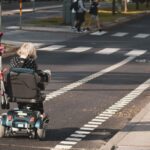
WHEN the Los Angeles transit authority extended a railway to link the city’s towering downtown to Santa Monica, a swanky seaside neighbourhood, last May, Angelenos rushed to experience it as if to glimpse a celebrity. For six decades, there had been no rail connection from the centre to the Westside beaches. So exciting was the concept that queues formed at 9.30am to catch the first train at noon.
A year later Los Angeles is gearing up to build a rail link to the traffic-strangled International Airport, introduce new rapid-transit bus routes and extend subway lines, among other things. The ventures will be financed by money from Measure M, a ballot proposal passed handsomely last November to increase the sales tax by half a cent to pay for public transport. Growing congestion and reduced state and federal funding have spurred other cities to do the same: voters in Atlanta and Seattle also passed transit referendums in November. But they are dwarfed by the Los Angeles measure, which is expected to come into effect in July and collect a whopping $120bn for transport over the next 40 years.
-
Monarch Airlines goes into administration
-
China is turning against cryptocurrencies
-
The Tory conference reflects the dismal state of the party
-
At least 58 people are killed and 515 injured in a shooting in Las Vegas
-
A Nobel prize for medicine for the understanding of body clocks
-
Why Swedish troops just finished their biggest war games in 23 years
It is not before time. Los Angeles County’s population has grown fast over the past few decades, making awful traffic worse. According to the Texas A&M Transportation Institute, a research group, residents of Los Angeles and nearby Anaheim spent a cruel average of 80 hours in jams in 2014, up from 58 hours in 1985. A study in 2016 by Inrix, a traffic-analytic firm, found that Los Angeles had the worst traffic in the world. One campaign ad for Measure M seductively promised to reduce daily time spent snarled up by 15%.
Some experts are sceptical, however. Measure M is the fourth sales-tax increase for financing public transport to be approved by county voters in the past 40 years. Reviews of the previous efforts are mixed. Despite the introduction of eight new railways and bus routes since 1990, passenger numbers on public transport have declined since their peak in 1985, when subsidies expired that kept bus fares artificially low. That year 497m journeys were made on Los Angeles County’s bus and rail system. In 2016 the figure was 416m—although, in the intervening years, the county’s population had grown by 2m. According to data from the Census Bureau, in 2015 83% of workers in Los Angeles drove to work alone or in carpools, while less than 7% used public transport.
Ethan Elkind, a law professor and author of “Railtown: The Fight for the Los Angeles Metro Rail and the Future of the City”, points out that passenger numbers on public transport have been declining nationwide. He adds that some new rail extensions financed by a sales-tax measure passed in 2008 have not yet started operation. But James Moore, who directs the transportation-engineering programme at the University of Southern California, is more pessimistic. He believes politics has inspired the county to invest too much in rail while ignoring buses. Buses, he believes, are a much more cost-effective way to move people around sprawling Los Angeles, which is largely zoned for single-family housing rather than the dense clusters that might encourage rail travel.
On two points there is broad consensus. First, if Measure M is to get results, zoning around transport corridors needs to allow for denser development. Second, the Los Angeles transit authority needs to take the politically risky step of favouring public-transport passengers, who are often poor (71% of them are Latino) over car drivers, who are more numerous and generally wealthier. A good example of the present bias is that the long-awaited railway from downtown to the Pacific stops for red lights, to let cars pass.






